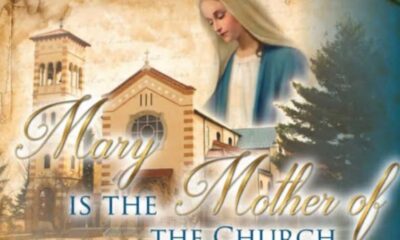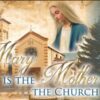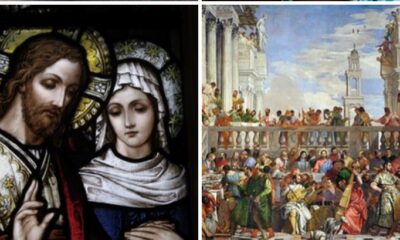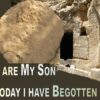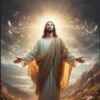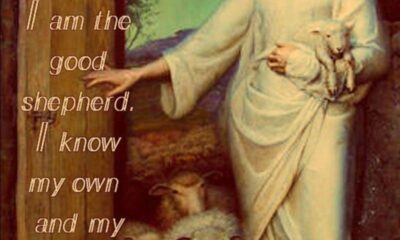Elizabeth’s Greetings To Mary
Elizabeth’s Greetings To Mary
Fourth Sunday of Advent (Year C)
Mic 5.1-4; Ps 79; Hebr 10.5-10; Lk 1.39-44
1. As the month of December progresses, the approach of Christmas becomes increasingly pressing. There is no avoiding the forthcoming feast, whether in the supermarkets with their displays, or in the streets with their decorations, or in the premature carols playing wherever we go. This is something which the liturgical celebration of Advent resists for three weeks, but even the Church today allows our thoughts to be directed towards Bethlehem.
2. Bethlehem is identified by the prophet Micah as the place where the Messiah will be born, confirming that He will be of the line of David. What Israel has expected of the Messiah has changed through the centuries. In the time of the prophets, spiritual leadership and earthly power were somehow brought together in a combined vision. By the time of Our Lord’s birth, when the Jewish people found their land and their Holy City occupied by an enemy empire, the Romans, the political aspect of the Messiah had assumed greater importance. Different Jewish groupings in our own time will give different pictures of what they expect of the Messiah, whom they believe is still to come. However, descent from David, has always been required as part of the very nature of the Messiah.
3. What Micah bears witness to is the fact that Israel’s hopes were focused on a single person. The Messiah would be born of a particular family in a particular place and would embody in Himself the vocation of the whole people.
4. For Christians, Our Lord is this awaited Messiah, the fulfilment of Israel’s hopes. In today’s Gospel, Saint Luke adds to the particular nature of His conception and birth with the story of the Visitation. Mary and her cousin Elizabeth meet and Elizabeth recognizes and proclaims Our Lady’s unique status as the mother of the Saviour: “Blessed art thou among women, and blessed is the fruit of thy womb.” Even the infant John the Baptist in Elizabeth’s womb leaps for joy in the presence of the long-awaited Messiah. These details of a family meeting, in all their familiarity and intimacy are the working out of the greatest theological mystery of the life of Israel! The Messiah has been conceived in the womb of the Virgin Mary.
5. There is something rather awesome about seeing particular evidence of people who were caught up in much greater events. Many of us probably find it interesting to visit historical sites where famous people lived. Seeing a breviary that belonged to Mary, Queen of Scots, or a diary from a soldier at the front in 1917, or a dress which Princess Diana wore, say, fills us with a certain sense of mystery. To come face to face with the detail of a person from the pages of history or from contemporary life brings us up short. Wars, disputes, disasters and death all take on an immediacy and strike home when we see something, however simple, that links us with the individuals concerned. For Catholics, places and items associated with the saints may have even more poignancy – the excavations beneath Saint Peter’s in Rome where the tomb of the Apostle has been found; the priests holes where some of the Forty Martyrs of England hid before their arrest; Saint Bernadette’s home in the Cachot at Lourdes; the bunker where Saint Maximilian Kolbe died at Auschwitz.
6. The evangelists Matthew, Mark and Luke, writing after the Church had begun, had the task of linking the deep, spiritual and theological meaning of the coming of the Messiah with the oral tradition of stories told which went back to Our Lady, the shepherds and the other participants in these earth-shattering events. At the time, the characters involved no doubt had some sense of wonder and believed that God was powerfully at work. But it is only in subsequent generations that the true and full significance of events can be comprehended. So, Saint Elizabeth, when John the Baptist leapt in her womb, was caught up in the working out of God’s saving activity, but she could not have known or expressed the full significance of what she experienced at the time. It is just the same as with the places associated with the Saints, who at the time were fugitives, prisoners or children.
7. Perhaps this is the very reason why, on the last Sunday in Advent, the liturgy emphasizes the very particular, local and individual ways in which God works out our salvation; and the places, people and times that he chooses. During the past weeks of Advent we have been reminded that we live in the “end-times” and that Our Lord will come again in power and great glory. The Christmas events are not the end of the story, but one part of the whole event. God became incarnate in one person, Jesus Christ, at one time and in one place, but to include all mankind in the plan for salvation. Our Lord died on Good Friday for the sins of all, but His Resurrection showed his particular death to have universal significance. The writer of the Letter to the Hebrews explores all this in a particular way, looking at how Our Lord replaces the priesthood and sacrifices of the Old Covenant and the Temple.
8. So, as we await the coming of Christ in glory and the fulfilment of human history, it is impossible to know what part we play in the story, but we can be completely sure that, in God’s plan, we do have a part to play. The life of the Catholic Church since our Lord founded her has been one of individual endeavour, success and sometimes failure with a wider significance:
9. Saint Peter’s ignominious denial and his subsequent ministry as Bishop of Rome, culminating in a martyr’s death but resulting in the universal primacy.
10. Saint Thomas More’s resistance to King Henry VIII on a single issue of authority, a principled stand leading to his proclamation a few weeks ago as Patron Saint of politicians.
11. The vision of three children in an obscure village in Portugal leading to the emergence of devotion to Our Lady of Fatima and to the Holy Father’s profound faith in her intervention to save his life from the assassin’s bullet.
12. As Christmas approaches, and we participate once again in the celebrations of God’s coming among us in Christ, and as we hear all the details of the events of our salvation, we can reflect on how the particular, intimate and perhaps seemingly minor details of our own life all fit in to God’s saving plan. We may never know why these individual events happen, or whom they influence or affect, but we can be sure that each of us matters to God as a person, and that every single human life has significance within God’s purposes.
13. So, as we await our salvation, and reflect on the influences on our spiritual pilgrimage, we can remember that in some way we may be part of the journey towards God of someone else, whether knowingly or not.
Osho


